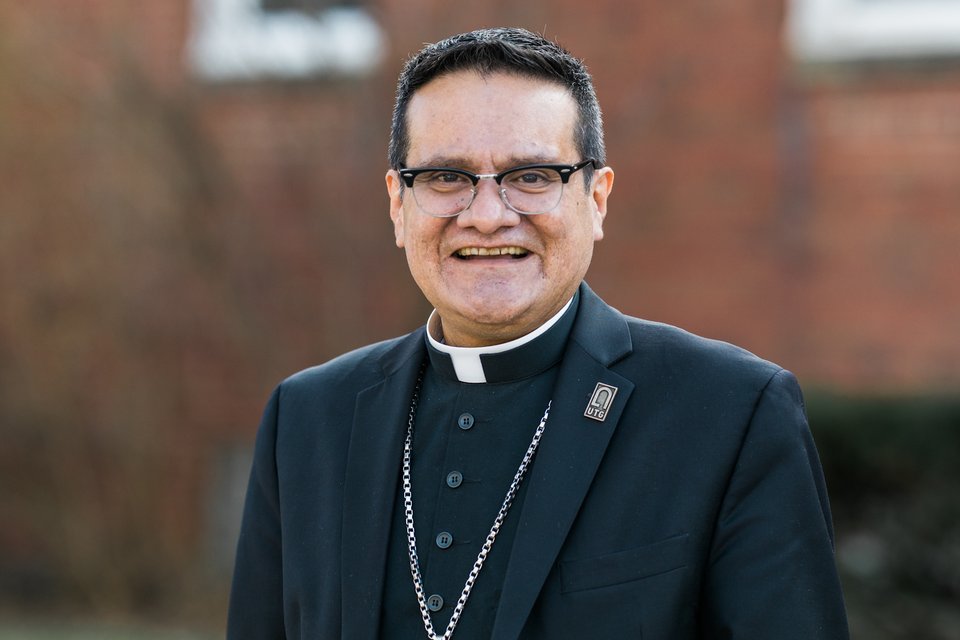Archbishop Russell’s dual titles may spark confusion for some, but the distinction is explained in canon law and tradition
DETROIT — What is the difference between an archbishop and an auxiliary bishop?
Sacramentally speaking, there is none.
Called and consecrated to the fullness of the priesthood of Jesus Christ, there is no difference in the ordination of an auxiliary bishop, diocesan bishop, archbishop and even a cardinal. Even the pope himself is not “ordained” a pope. He, too, is a bishop.
But since Archbishop Paul F. Russell, who will inaugurate his ministry in the Archdiocese of Detroit on July 7, holds both titles — archbishop and auxiliary bishop — it’s worth exploring what canon law has to say about the distinction between different “types” of bishops.
All bishops, as successors to the apostles, possess the same charism, dignity and sacramental authority as members of the Church’s magisterium. While the pope, by virtue of his office, enjoys some special rights and privileges inherent to his unique role as successor to St. Peter, the difference between other bishops lies at the ecclesial — or Church — level and is largely the subject of canon law.
While the pope has full, supreme and universal power and jurisdiction over the whole Church, a diocesan bishop or archbishop — often called an “ordinary” — has power and jurisdiction over a smaller corner of the Church, which is his diocese.
Archbishop Allen H. Vigneron is the ordinary of the Archdiocese of Detroit, for instance.
The difference between an auxiliary bishop and an ordinary of the same diocese is in the governing rights of the diocese. Auxiliary bishops (while technically diocesan bishops in their own right with regard to their “titular sees”) exercise their sacramental authority with the permission of and in harmony with the local ordinary. Unlike a coadjutor bishop, an auxiliary bishop does not automatically hold the right of succession should the ordinary bishop resign or die.
Normally, the title “archbishop” refers to the diocesan bishop of a metropolitan archdiocese, but this isn’t always the case. Like in Archbishop Russell's case, the pope may grant the honorary title of “archbishop” to bishops serving in Vatican curial offices or in diplomatic posts; Archbishop Russell served as apostolic nuncio to Turkey, Turkmenistan and Azerbaijan, for instance.
Although it is rare for an archbishop to later serve as an auxiliary bishop, it is not unprecedented, such as in the case of a Vatican official returning to diocesan ministry.
So, what do auxiliary bishops do?
A bishop’s threefold office as priest, prophet and king — and their corresponding duties of sanctifying, teaching and governing the faithful — mean a bishop is chiefly responsible for offering the sacraments, preaching the Gospel as a witness to the truth of Christ and exhorting and leading the faithful of their diocese by their words and example.
In the case of geographically large or population-dense dioceses, the ordinary may lack the time and ability to effectively minister to the Catholic population in his area, and may petition Rome for the help of one or several auxiliaries.
The roles of an auxiliary bishop may differ depending on the diocese, but in general, auxiliary bishops may assist with confirmations, baptisms, ordinations and special Masses, or even in the regional governance of a particular part of the diocese.
In the Archdiocese of Detroit, auxiliary bishops are often called upon to serve as moderators of the archdiocese’s four regions — South, Central, Northeast and Northwest — and have also historically served in roles within the archdiocesan Curia or Sacred Heart Major Seminary.
Currently, the Archdiocese of Detroit has four active auxiliary bishops — Bishops Donald F. Hanchon, Arturo Cepeda, Robert J. Fisher and Gerard W. Battersby — and two retired auxiliaries, Bishops Francis Reiss and Thomas Gumbleton, in addition to a retired ordinary, Cardinal Adam J. Maida. The four active auxiliaries also serve as regional moderators, with Bishop Hanchon serving the Central Region, Bishop Cepeda serving the Northwest, Bishop Fisher serving the Northeast and Bishop Battersby serving the South.
Once he arrives in the archdiocese, Archbishop Russell will serve with Bishop Battersby in the South Region, which includes parishes in southern Wayne and Monroe counties.
If, as expected, Pope Francis accepts the retirement of Bishop Hanchon, who will turn 75 years old in October (the age at which bishops are canonically required to offer their resignations to the pope), Bishop Battersby would take over Bishop Hanchon’s pastoral responsibilities in the Central Region, which includes the cities of Detroit, Hamtramck and Highland Park, with Archbishop Russell remaining in the South Region.
A similar version of this article was first published in The Michigan Catholic newspaper in 2017.
Related stories
- Pope appoints Vatican diplomat Archbishop Russell as Detroit auxiliary bishop
- As he arrives in Detroit, Archbishop Russell sees 'God's work' guiding his life
- Mountain climbing? Swimming? Biking? New auxiliary bishop the outdoorsy type
- Instagram bishop: How Archbishop Russell discovered the power of social media
- Archbishop of ... Novi? No, Archbishop Russell's 'titular see' isn't in Michigan
- Detroit priests who know Archbishop Russell say he's a 'good listener,' caring pastor
- What's the difference between an archbishop and an auxiliary bishop?
About Archbishop Russell
- Meet Detroit's newest auxiliary bishop: Archbishop Paul F. Russell's biography
- 'Cor ad cor loquitur' — The meaning of Archbishop Russell's motto, coat of arms
- A bishop's toolkit: The meaning behind Archbishop Russell's episcopal insignia
- Watch live: Archbishop Russell's Liturgy of Welcome and Inauguration of Ministry
Copy Permalink
Bishops











